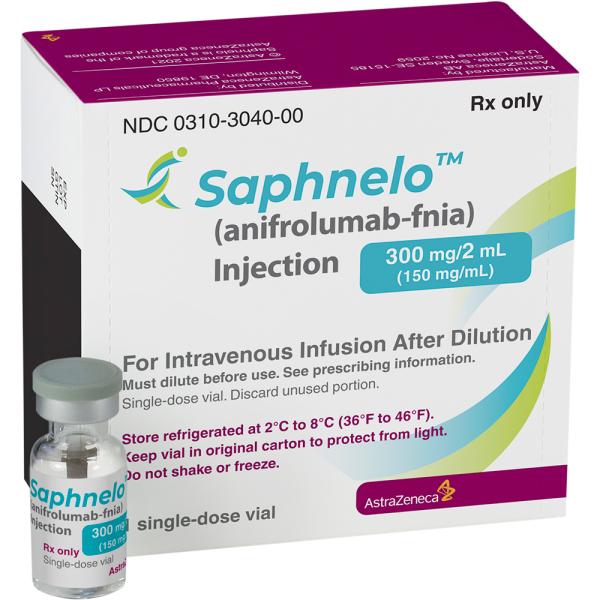Saphnelo Disease Interactions
There is 1 disease interaction with Saphnelo (anifrolumab).
Immunosuppressive agents (applies to Saphnelo) infections
Major Potential Hazard, Moderate plausibility. Applicable conditions: Infection - Bacterial/Fungal/Protozoal/Viral
Serious and sometimes fatal infections have been reported in patients receiving immunosuppressive agents. Patients receiving immunosuppressants are at increased risk of developing bacterial, viral, fungal, and protozoal infections, and new or reactivated viral infections including opportunistic infections. Caution should be exercised when considering their use in patients with severe or chronic infections. It is recommended to interrupt therapy in patients who develop a new infection while undergoing treatment and to monitor these patients closely for any sign or symptom indicative of infection.
References (9)
- (2001) "Product Information. Rapamune (sirolimus)." Wyeth-Ayerst Laboratories
- (2007) "Product Information. Soliris (eculizumab)." Alexion Pharmaceuticals Inc
- (2011) "Product Information. Nulojix (belatacept)." Bristol-Myers Squibb
- (2012) "Product Information. Aubagio (teriflunomide)." Genzyme Corporation
- (2014) "Product Information. Entyvio (vedolizumab)." Takeda Pharmaceuticals America
- (2017) "Product Information. Mycophenolic Acid (mycophenolic acid)." Apotex Corporation
- (2018) "Product Information. Gamifant (emapalumab)." Sobi Inc
- (2021) "Product Information. Lupkynis (voclosporin)." Aurinia Pharma
- (2021) "Product Information. Saphnelo (anifrolumab)." Astra-Zeneca Pharmaceuticals
Switch to consumer interaction data
Saphnelo drug interactions
There are 236 drug interactions with Saphnelo (anifrolumab).
More about Saphnelo (anifrolumab)
- Saphnelo consumer information
- Check interactions
- Compare alternatives
- Pricing & coupons
- Reviews (11)
- Drug images
- Side effects
- Dosage information
- During pregnancy
- FDA approval history
- Drug class: selective immunosuppressants
- Breastfeeding
- En español
Related treatment guides
Drug Interaction Classification
| Highly clinically significant. Avoid combinations; the risk of the interaction outweighs the benefit. | |
| Moderately clinically significant. Usually avoid combinations; use it only under special circumstances. | |
| Minimally clinically significant. Minimize risk; assess risk and consider an alternative drug, take steps to circumvent the interaction risk and/or institute a monitoring plan. | |
| No interaction information available. |
See also:
Further information
Always consult your healthcare provider to ensure the information displayed on this page applies to your personal circumstances.


